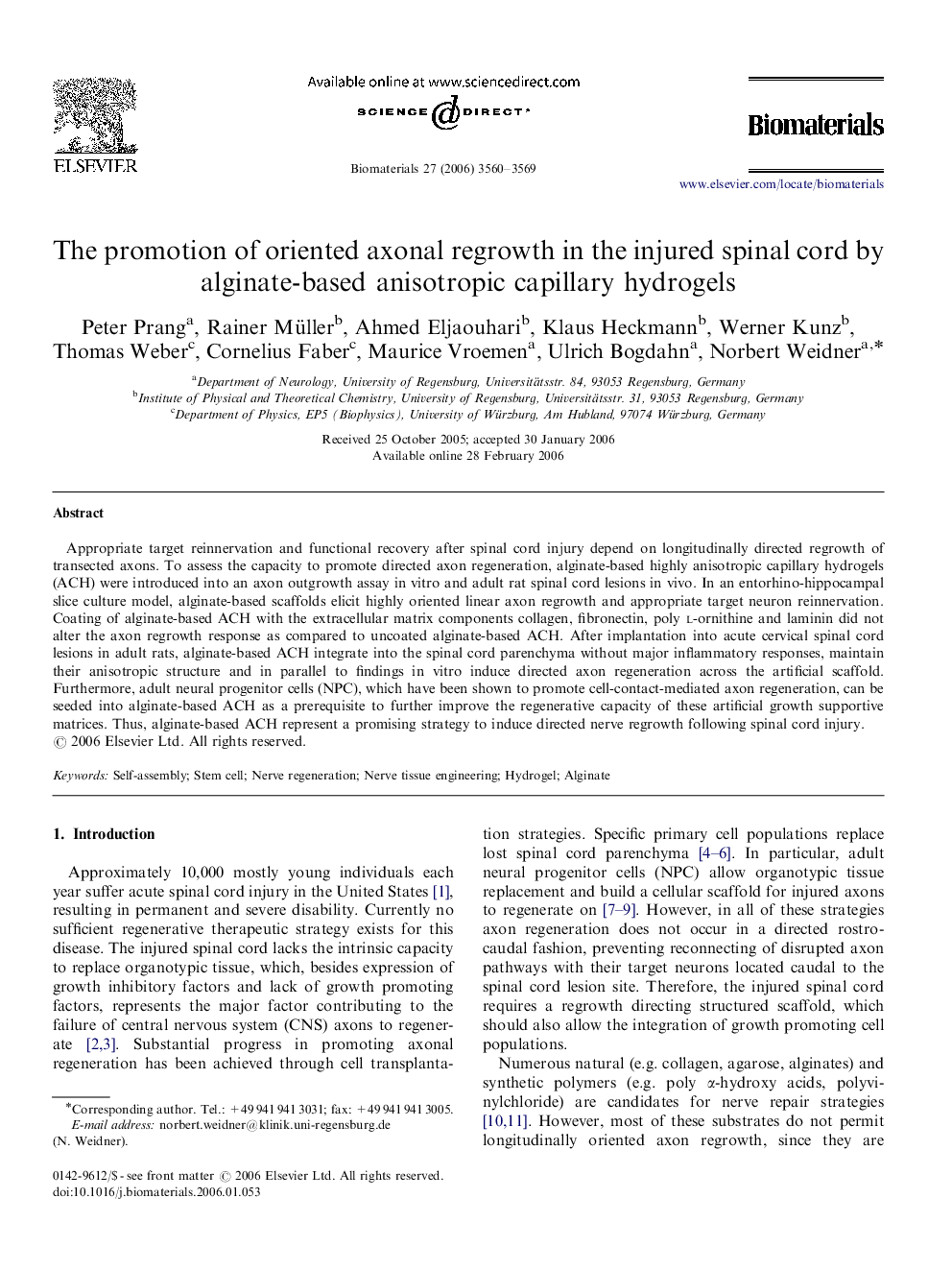| Article ID | Journal | Published Year | Pages | File Type |
|---|---|---|---|---|
| 12042 | Biomaterials | 2006 | 10 Pages |
Appropriate target reinnervation and functional recovery after spinal cord injury depend on longitudinally directed regrowth of transected axons. To assess the capacity to promote directed axon regeneration, alginate-based highly anisotropic capillary hydrogels (ACH) were introduced into an axon outgrowth assay in vitro and adult rat spinal cord lesions in vivo. In an entorhino-hippocampal slice culture model, alginate-based scaffolds elicit highly oriented linear axon regrowth and appropriate target neuron reinnervation. Coating of alginate-based ACH with the extracellular matrix components collagen, fibronectin, poly l-ornithine and laminin did not alter the axon regrowth response as compared to uncoated alginate-based ACH. After implantation into acute cervical spinal cord lesions in adult rats, alginate-based ACH integrate into the spinal cord parenchyma without major inflammatory responses, maintain their anisotropic structure and in parallel to findings in vitro induce directed axon regeneration across the artificial scaffold. Furthermore, adult neural progenitor cells (NPC), which have been shown to promote cell-contact-mediated axon regeneration, can be seeded into alginate-based ACH as a prerequisite to further improve the regenerative capacity of these artificial growth supportive matrices. Thus, alginate-based ACH represent a promising strategy to induce directed nerve regrowth following spinal cord injury.
